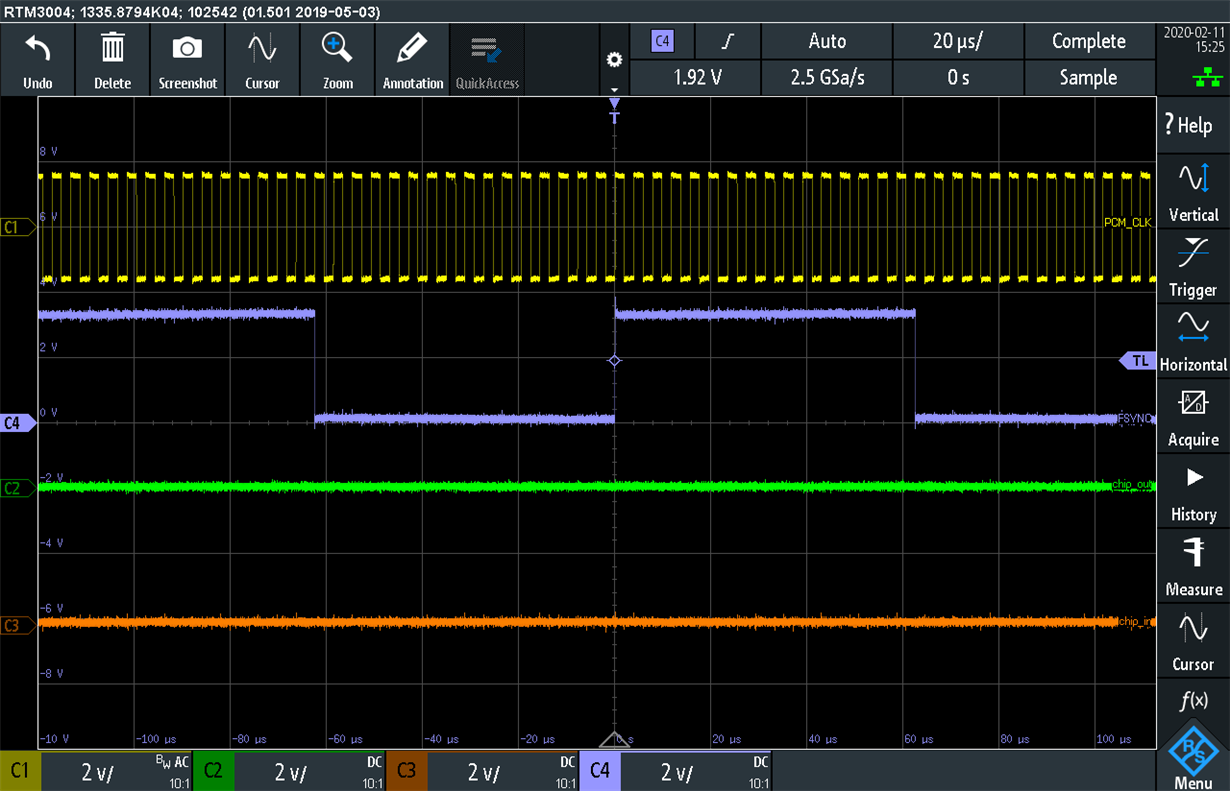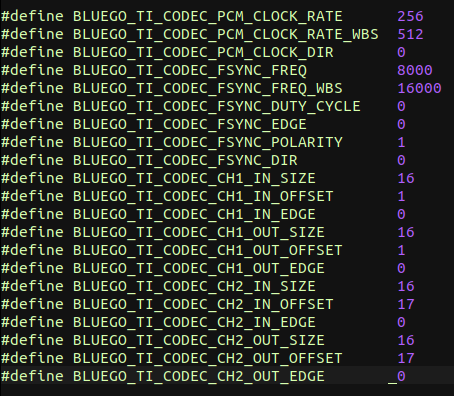Other Parts Discussed in Thread: CC2564, , CC2564MODA
Hi,
Our device has CC2564 acts as HFP gateway to connects with headset, and CC2564 is PCM Master. The SP version we are using is v1.3. In our test in a clear RF environment, we still hear some pops in phone audio from headset, but if we connect the headset with phone directly there is no such pops.
To further clarify where the pops come from, we just connected SCO with headset but the host did not send data to CC2564 throught AUDIO_IN line as below:
But headset still hear pops, and the SCO audio extracted from air log also has pops:
https://e2e.ti.com/cfs-file/__key/communityserver-discussions-components-files/538/AirLog.7z
We saw there are few threads that discusses this issue:
- We have disabled page_scan during phone call
- We tested using last BTS v1.3 for CC2564C
Can you please check this issue? Is there any solutions that I missed?






